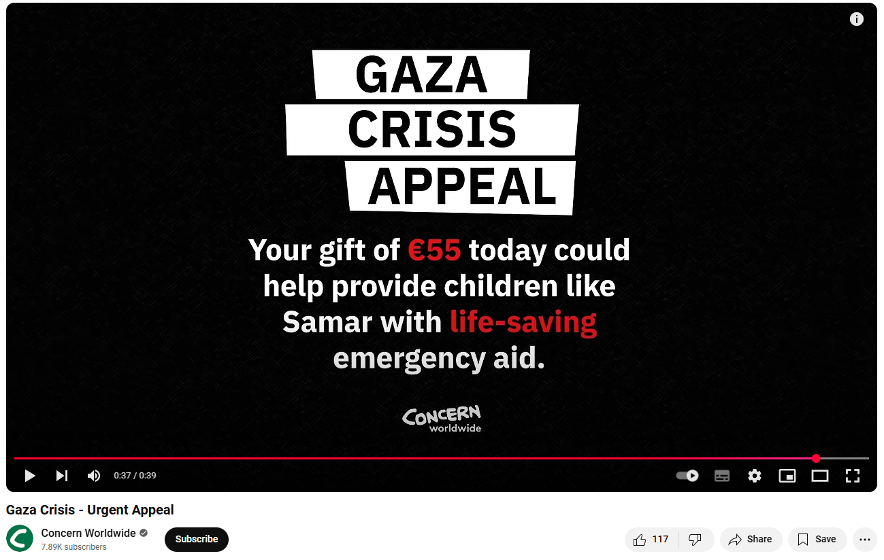As younger donors step up to donate, are charities ready for them?
Younger donors are ready to give to charities, but delivering your fundraising messages in the right way could make a big difference to if they choose your cause. In this article, Blue State’s Anjali Bewtra shares what fundraisers should consider when communicating with younger donors, as well as some examples of charities that are already engaging well with this group.
- Written by
- Anjali Bewtra
- Added
- February 19, 2025
In the not-too-distant past, if you were to ask a seasoned fundraiser about who gives to charity, they’d probably say something like this:
‘Younger people might give once, and not very much. But the real money comes from older donors – settled, with disposable income, direct debits and maybe even a gift in their will.’
But in 2024, fundraisers began to see just how different things can be – and it’s a glimpse of the future. Younger donors are not just giving, they are now among the most generous groups in the UK.
The online, international experiment
In recent months, digital campaigns run by disaster and international aid charities have seen unprecedented engagement from younger audiences.
Charity storytelling mirrors news reports and raw footage shared through citizen journalists on social channels. Whether it’s UNHCR staff reporting from Sudan or Concern Worldwide’s Gaza appeal fronted by a young contributor, it’s their bread and butter.
Though this approach is nothing new, the increased media attention and prolonged periods of crises in the news means charity content has become a mainstay and for some, an essential source of truth.
Content like this has galvanised a new generation of supporters. Across 2023, younger donors were the most generous in the UK.
Here at Blue State, we always suspected that this new, more transparent and timely approach – coupled with more flexible fundraising mechanics – would engage younger people. But it wasn’t until we ran our giving survey last year, that we realised just how much of an impact it was having.
Our research surveyed more than 2000 people and found that of all age groups, younger audiences had significantly higher average gifts over 2023.
Those aged between 18 and 34 had an average gift of £244, compared to the UK average donation of £165 across all age groups. These younger donors were also the most likely to say they want to give again in the next 12 months.
Younger donors also gave more to international causes than any other age group last year. For those aged between 18 and 34, 72 per cent did so – versus an average of 40 per cent for those aged 35 to 65+.
It remains to be seen whether the mass engagement of younger donors engaged through hard hitting real-time social content will be here to stay, or a rare moment that’s limited to a specific crisis.

The uncomfortable start of things to come
We know the biggest wealth transfer in history is underway – from Gen X and Baby Boomers to Millennials and Gen Z. And now we also know that given the right messaging, and tying in with external news and media, younger people are ready, willing and able to give.
The question is: are charities ready to meet them?
What should organisations do next to meet this opportunity?
We’re sure this research is going to drive some uncomfortable discussions, but they’re probably long overdue.
Charities have a duty to work with those most likely to give and find them where they are. Even if that is on TikTok and not via a direct mail pack – especially when, as we saw in our tracker, only seven per cent of audiences aged 25 to 34 and eight per cent of those aged 35 to 44 were selecting direct mail to find out about charities and good causes.
Of course, large gifts will still come from older donors. But younger people are giving regularly – even if not always via ‘regular giving’ mechanics, but multiple single donations*.
Engaging a younger audience will mean different ways of doing things. It could mean refreshing a brand or trying new platforms for advertising – meeting younger people where they are. Or it could mean rethinking definitions of fundraising, a world beyond just one-off and regular gifts.
Essential to all of this is finding the stories that matter to young people and having them told by trusted and compelling voices.
We know this will mean trade-offs, difficult decisions and prioritisation to make the stretched resources go further. This may involve tricky internal conversations. Even when previous approaches aren’t delivering as well as they used to, it can still be hard to make a change. It’s something we’ve supported many clients on, and it’s always a complex discussion.
Working with new audiences means taking steps into new areas, working out new models. Testing, learning, testing again.
But like many fundraisers, we can now see that when it’s done right, reaching out to younger donors is no longer a risk – but a necessary change.
* For more on ‘irregular giving’ take a look at this interesting article.
IMAGES: Screen grabs from UNCHR and Concern Worldwide’s public YouTube videos.




















